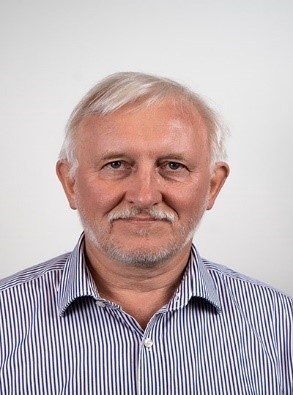Presentations by Senior Researcher Tatyana and Professor Korobkin from UEA
Presenter: Alexander Korobkin, Professor, School of Mathematics, University of East Anglia
Title: Numerical solution of Fluid-Structure Interaction problems
Date and Time: August 17, 2023 (Thursday), 15:00-16:00
Venue: Room 315, Chuanhai Building
Introduction to the Presenter:

Summary of the presentation:
The presentation starts with physical and mathematical difficulties in solving FSI problems where the inertia effects dominate. Such problems are coupled, which means that the structural deformations and the hydrodynamic loads should be determined at the same time. However, in practice, we use a CFD solver to calculate the loads for given motions of the structure, and we use a FEM solver to fins the structural deformation caused by given external loads. To solve coupled problems of FSI, one uses a CFD solver and a FEM solver one after another updating the loads and structural motions at each iteration. It is shown that these iterations do not converge. Convergence can be achieved by iterations with relaxation. The optimal value of the relaxation parameter is related to the added mass of the structure in one-dimensional motions. In problems of hydroelastic slamming, relaxation is suggested to achieve using the added-mass matrix of the equivalent linear problem.
Organization:
College of Shipbuilding Engineering, Harbin Engineering University
Sponsors:
Institute of Ship and Ocean Platform Overall Technology
Ministry of Science and Technology of China-Russia Polar Technology and Equipment "one Belt one Road" Joint Laboratory
Ministry of Industry and Information Technology Polar Equipment Technology Key Laboratory
Association of Young Scientists and Researchers, College of Shipbuilding Engineering, Harbin Engineering University.
Presenter: Tatyana Khabakhpasheva, Senior Researcher, School of Mathematics, University of East Anglia
Title: Normal mode method in problems of hydroelasticity
Date and Time: August 17, 2023 (Thursday), 14:00-15:00
Venue: Room 315, Chuanhai Building
Introduction to the Presenter:

Khabakhpasheva Tatyana is a Senior Research Fellow of School of Mathematics, University of East Anglia, Norwich, UK. Khabakhpasheva Tatyana received her MSc degree in Mechanics and Mathematics from Novosibirsk State University (NSU), Russia, in 1983. In 1991, she defended her Ph.D. thesis at the Lavrentiev Institute of Hydrodynamics (LIH), Novosibirsk, specializing in Differential Equations and Mathematical Physics. She received her habilitation in 2009. The topic of her habilitation thesis was “Hydrodynamic effects on unsteady interaction of elastic bodies with liquid free surface". Since 1983, she has been working continuously at LIH, Department of Theoretical Hydrodynamics and then Department of Applied Hydrodynamics, initially as special trainee, then as researcher, senior and leading researcher. In 2008-2010, she was acting as the Head of Hydro-Aero-Elasticity Laboratory. Since 2011 she has been a Leading Research Fellow in the Department of Theoretical Hydrodynamics.
In 1990, she joined the Special Training and Research Centre of NSU, first as a teacher, then lecturer, associate professor, and in 2010 she was awarded the title of Professor in Mathematics. She lectured special courses on fluid-structure interaction at the Faculty of Mechanics and Mathematics of NSU.
From 2014 to present she has been working at the University of East Anglia (UEA), Norwich, UK, as a Senior Research Fellow in the School of Mathematics.
Her current research interests include hydroelasticity, water impact and exit, unsteady problems of fluid-structure interaction, problems of hydroelasticity of ice and Very Large Floating Structures.
Tatyana has more than 70 publications in refereed journals and proceedings. She has given several invited lectures at International Conferences. She reviewed many papers for research journals, such as Journal of Fluid Mechanics, Physics of Fluids, Journal of Fluid and Structures, European Journal of Mechanics-B/Fluids, Fluid Dynamics, Journal of Applied Mechanics and Theoretical Physics.
Summary of the Presentation
The method of normal modes can be considered as a general method of constructing analytical and semi-analytical solutions in many problems of hydroelasticity. Its advantage is:
-- It allows to satisfy boundary conditions exactly.
-- It reduces the fourth order partial derivative equations to an infinite system of evolutionary differential equations, which is usually easily solved by the reduction method.
It will be shown how to construct normal modes for a wide range of two-dimensional problems on the interaction of elastic bodies with fluid, what is the matrix of added masses and how to calculate it, how to re-decompose normal modes for an inhomogeneous plate by modes of a homogeneous plate and how the matrix of added masses will change in this case. As examples, the solution of the problem of a floating plate with a crack and the axisymmetric problem of an elastic conical shell impact will be shown.